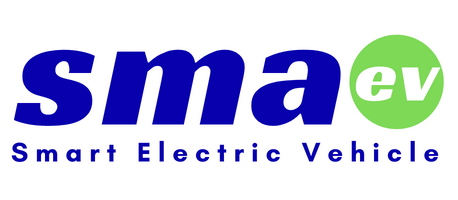At the core of the electric vehicle technologies is undoubtedly the battery. The battery accounts for about 30% to 40% of cost of an electric vehicles. To understand the electric vehicle, it’s necessary to understand this key component. This article will introduce electric vehicle battery materials, technologies and important suppliers.
According to the Global EV Outlook 2021, released by International Energy Agency[LL2] (IEA), the global electric vehicle market reached 3 million units in 2020, with a significant increase of 41% compared with 2019 and compound annual growth rate of 21% in the next ten years.
The electric vehicle sales is skyrocketing, and the demand for the battery is even larger . The world’s major automakers are actively investing in battery factories or have technical cooperation with upstream suppliers to ensure the stable the battery supply. For example, Tesla announced at the end of 2020 that it has obtained the mining rights of lithium mines in Nevada, USA. Panasonic also announced plans to launch an EV battery plant in Nevada, USA by the end of 2021.
Toyota announced on September 7, 2021 that it plans to invest 1.5 trillion yen in electric vehicle batteries by 2030. At the end of 2021, it announced that it will build a vehicle battery factory in North Carolina, the United States. The factory is scheduled to start production in 2025. The production capacity of the batteries in the first phase will supply 200,000 electric vehicles. The ultimate goal is to expand battery production to supply 1.2 million electric vehicles per year.
The battery is mainly composed of three parts: cell, chassis, and power control board. When it comes to the supply chain, the upstream comprises the materials, including electrode, electrolyte, separator, tank, copper foil, aluminum foil. The he midstream is the battery cell, the downstream is the battery modules.
Four major materials
Positive electrode, negative electrode, electrolyte, and separator are four major materials, accounting for about 60% of the cost of battery cells.
- Cathodes Materials:
Lithium manganate (LiMn2O4), lithium iron phosphate (LiFePO4), and lithium nickel cobalt (LiNiCOO2) are three main materials. Conductive agents and resin binders are also important materials, being added to the positive active material, and then coated on the aluminum substrate. The overall performance of lithium batteries depends on the quality of the cathode material. Therefore, it’s crucial to ensure strict quality control in the whole process.
Major global manufacturers include LG Chem, Panasonic, BYD, BASF, Guoxuan Hi-Tech, and Johnson Matthey.
- Anodes Materials:
Carbon account for the majority of the anodes materials, and comprise graphite and coke series. Graphite series has high gravimetric energy density and the structure of the material itself has regularity. And 3C electronic products.
Leading suppliers of anode materials are mainly located in Japan, Korea and China, including Hitachi, Mitsubishi Chemical and Tokai Carbon, BTR Energy, GS E&C, and LS Mtron Carbonics Wait.
- Electrolytes:
The Electrolyte is the medium that provides the ion transport mechanism between the cathode and anode of a cell.
The major suppliers are primarily located in Asia, especially China and Japan, including CapChem Technology and Mitsubishi Chemical. In addition, there are some new entrants, including South Korea’s LG Chem, the United States’ DuPont (DuPont), and Japan’s Daikin (Daikin).
- Separators:
A separator is a permeable membrane placed between a battery’s anode and cathode.The separator forms a catalyst that allows ions to move from the positive electrode to the negative electrode during charging, and from the negative electrode to the positive electrode during discharge.
Major separator companies come from Japanese, including Asahi Kasei and Toray Tonen. In recent years, there are more and more separator manufacturers in China.
The leading manufacturers of battery materials in Taiwan include:
- Cathode: Megima, CommScope, Likai, and Yijiu Technology
- Anode: China Carbon, Rongtan, Changchun Petrochemical
- Electrolytes: Polyhex
- Separator: BenQ.
Battery cell production clusters in Asia
The manufacturing process of the battery cell is to produce the positive and negative poles through mixing, beating, coating, drying, rolling, slitting, etc., and then assembling, pouring electrolyte, and sealing the cans. The mass production scale and yield rate of battery cell factories are key competitiveness.
Since lithium-ion battery cells are the most critical part in the battery supply chain, battery cell manufacturers have risen rapidly in the automotive battery supply chain. At present, the main supply of battery cells comes from Asian manufacturers in Japan and South Korea, including South Korea’s LG Energy Solution (an independent subsidiary of LG Chem), BYD, Panasonic, CATL, SKI, and China’s CATL.
At present, 74% of lithium battery production capacity is located in Asia; 13% is located in Europe; 10% is located in the United States (most of which are currently joint ventures between Tesla and Panasonic).
In terms of downstream battery assembly, output value of Taiwan’s battery pack accounts for about 40% of the world’s output value (mainly 3C products are used), such as Simplo, Dynapack and other battery pack factories, but battery assembly has a relatively low technical threshold, resulting in lower gross profit.
Taiwan currently has a layout in the battery system, charging system, motor power, body system, and vehicle electrical system of electric vehicles, and it is squeezed into the global supply chain of electric vehicles. Most of the automotive power systems are major technology companies such as TSMC, Realtek Semiconductor, AUO, and Innolux . Starting from the upstream battery materials of electric vehicle batteries can be regarded as a future niche industry in Taiwan that can concentrate resources and develop for a long time.
The IEA expects the sales number of electric cars, buses, vans and trucks to reach 145 million by 2030.
As several countries such as Europe, the United States and Japan have announced plans to ban the sales of non-electric vehicles, the government targets are seen as one of major driving forces of the market growth.
At present, electric scooters and bicycles mainly adopt low-cost lead-acid batteries; lithium-ion has become the most commonly used battery cathode material for BEV and PHEV vehicles.





